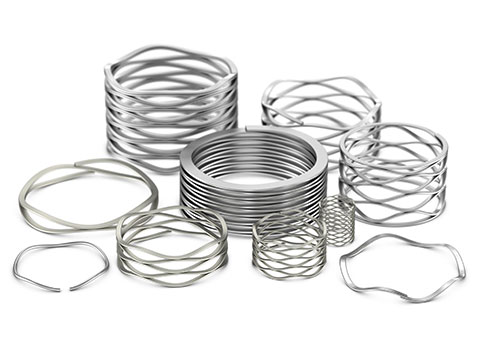
Posted to News on 15th Dec 2023, 13:00
Wave springs in medical applications
Medical device engineers strive for compact designs for a variety of reasons, and in many cases this requires compact components. To help designers optimise the size of their devices, Simon Ward, technical manager at TFC, highlights the capabilities of wave springs.

Springs are commonly used in a variety of medical products, such as surgical instruments, medical devices, wearable medical technology and orthopaedic equipment. They are commonly used as return springs for function buttons, where they can provide the necessary force to restore a button to its original position. Springs are also used to maintain electrical contact or compensate for assembly tolerances.
While coil springs have conventionally served these purposes, there has been a shift in preferences and wave springs are gaining traction as an alternative. One key reason for this is their space-saving advantage, as wave springs require less than half the space of a coil spring delivering the same spring force with a smaller operating height.
The compact design of a wave spring is particularly valuable in situations with tight space constraints. They are a great choice for handheld instruments, tools, and wearable devices, in situations where designers are seeking to create lightweight, compact and well-balanced products. For example, wave springs have been used in the design of insulin pens, and in surgical and dental tools that use high speed precision bearings.
Choosing a wave spring
When selecting a wave spring for medical applications, there are a few factors to consider. One option is the Crest-to-Crest wave spring, which is suitable for applications requiring lower spring rates. For applications involving short deflections and low to medium forces, a single-turn wave spring can provide precise and reliable performance. Linear springs may be a suitable choice if a straight load bearing system is required.
However, it's important to note that engineers cannot simply interchange coil springs with wave springs without considering their distinct characteristics. When a load is applied, wave springs flatten to provide upward force, whereas coil springs twist during compression, causing the force to deviate from the axis. Consulting with a wave spring expert can provide valuable guidance when integrating the appropriate spring into your medical device.
Custom options
Wave springs are manufactured in several different forms, and with a range of spring characteristics. If off-the-shelf options do not fit the size and environmental resistance requirements needed, spring specialists can design custom wave springs. This involves tailoring the number of turns or waves, material and size to meet the specific product needs. There are a range of materials available that are ISO 13485:2016 certified, suitable for different environmental conditions.
Popular materials for wave springs in medical applications include 302 and 316 stainless steel, which can withstand the higher temperatures applied during cleaning and sterilisation processes, without any compromise to spring properties.
It can be challenging to know where to start with wave spring specification, especially for design engineers used to working with coil springs. Working with a wave spring specialist can help achieve the best outcome, enabling medical device designers to benefit from valuable advice on which wave spring is best suited.





